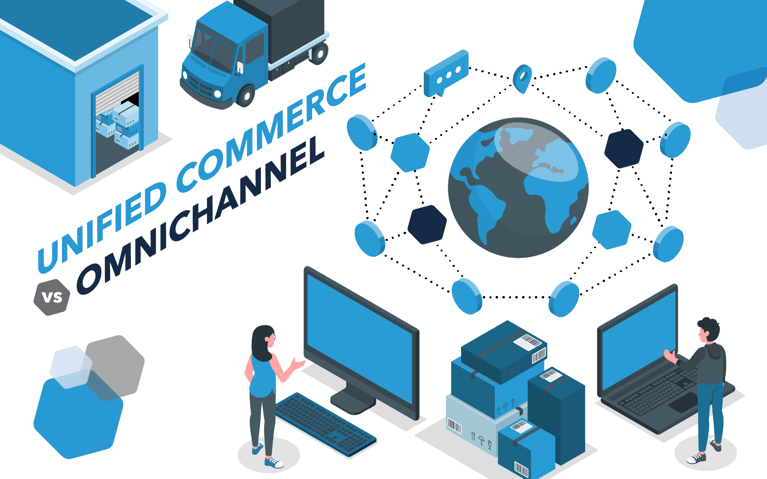This is an excerpt from Cart.com’s newest eBook “Scaling with unified commerce: A step-by-step guide,” an in-depth look at unified commerce, how it compares to other commerce strategies and how to implement a unified commerce strategy. Check out the full eBook here.
Part 4: Scaling your unified commerce strategy
Scaling your unified commerce strategy is crucial for several reasons:
- To meet growing demand: As your business attracts more customers and expands into new markets, scaling your unified commerce strategy allows you to accommodate increased demand for your products and services without sacrificing quality or customer satisfaction.
- To remain competitive: In a fast-paced industry, scaling your operations is essential for staying competitive. Investing in scalable technology solutions and processes allows you to keep up with evolving customer expectations and outpace competitors that may struggle to adapt.
- To maximize efficiency and profitability: Scaling your unified commerce strategy enables you to optimize your operations and achieve greater efficiency across all channels. Streamlining processes, leveraging automation and standardizing workflows can reduce costs, improve margins and increase profitability as your business grows.
- To enhance the customer experience: A scalable unified commerce strategy allows you to deliver a seamless and consistent customer experience across all touchpoints, regardless of scale. Investing in robust infrastructure and flexible technology solutions ensures that customers receive the same level of service and satisfaction as your business expands.
- To facilitate future growth: Scaling your unified commerce strategy lays the foundation for future growth and expansion. By building a scalable infrastructure and adopting agile practices, you can quickly adapt to changing market conditions, capitalize on new opportunities and sustain long-term success in a competitive marketplace.

Steps for scaling your unified commerce strategy
- Step one - Infrastructure readiness: Ensure that your technology infrastructure, including e-commerce platforms, inventory management systems and fulfillment capabilities, can handle increased demand and complexity as you expand.
- Step two - Standardized processes: Implement standardized processes and workflows across all channels to maintain consistency and efficiency as you grow. This includes order management, inventory tracking and customer service procedures.
- Step three - Scalable technology solutions: Invest in scalable technology solutions that can accommodate growth without significant modifications or disruptions to your operations. This may involve cloud-based platforms and modular software architectures.
- Step four - Data-driven decision-making: Leverage data analytics to monitor performance, identify opportunities for improvement and make informed decisions about resource allocation and strategic initiatives.
- Step five - Partner network expansion: Collaborate with third-party vendors, logistics providers and technology partners to expand your capabilities and reach new markets. This may involve integrating with new sales channels or outsourcing certain functions to specialized service providers.
- Step six - Continuous optimization: Continuously optimize your unified commerce strategy based on customer feedback, market trends and performance metrics. This may involve testing new features, refining processes and iterating on your approach to ensure long-term success and sustainability.

- Reaching goals
- Increased sales
- More repeat customers
- Less returns
- Increased brand reviews
- More social mentions
- Higher perfect order rate
Laying out a path to continuous improvement
 It’s essential to regularly evaluate your current processes and technologies to identify areas for enhancement and optimization. From there, you can prioritize further improvements based on their potential impact on customer experience, operational efficiency and business growth. Implement enhancements incrementally, using agile methodologies to iterate quickly and adapt to changing market conditions. You should continuously monitor the results of your improvements closely, gathering feedback from customers and stakeholders to inform future iterations and ensure ongoing success.
It’s essential to regularly evaluate your current processes and technologies to identify areas for enhancement and optimization. From there, you can prioritize further improvements based on their potential impact on customer experience, operational efficiency and business growth. Implement enhancements incrementally, using agile methodologies to iterate quickly and adapt to changing market conditions. You should continuously monitor the results of your improvements closely, gathering feedback from customers and stakeholders to inform future iterations and ensure ongoing success.
Unified commerce is the ultimate retail alchemy, blending online and offline realms to create a seamless shopping symphony. It's not just about selling; it's about orchestrating a harmonious journey where customers seamlessly transition from browsing to buying. By merging the physical and digital worlds, unified commerce transforms transactions into experiences, forging unbreakable bonds between brands and their audience.
Improving the customer experience with Unified Commerce + Cart.com
Unified commerce strives to effortlessly merge retail channels and interactions, ensuring a uniform shopping journey for customers, whether online or offline. It prioritizes mapping the customer experience to boost retention and loyalty, eradicating boundaries between digital and physical realms. Through centralized data, brands can tailor experiences and optimize operations, driving business growth. This strategy provides deep insights into consumer behavior and enhances shopping coherence and fostering vibrant, customer-centric operations.
At Cart.com, we believe both digital and physical (software and fulfillment) are needed to execute unified commerce well. We’re leading provider of unified commerce and logistics solutions that enable D2C and B2B companies to sell and fulfill anywhere their customers are. The company’s enterprise-grade software, services and logistics infrastructure, including its own network of fulfillment and distribution centers, are used by some of the world’s most beloved brands and most complex companies to unify commerce operations across channels and drive more efficient growth.
With the launch of Cart.com's Order Management System (OMS), Cart.com gives brands a comprehensive solution for unified commerce, allowing seamless management of orders and inventory across various channels and locations. With features like omnichannel order and inventory management, predictive AI and post-purchase customer engagement tools, Cart.com's OMS facilitates a streamlined order lifecycle from product discovery to delivery across multiple channels. Cart.com is Unified Commerce. Contact us today to learn how Cart.com can help you.
Want to learn more? Check out the rest of our eBook about unified commerce – along with strategies and best practices to implement and scale with a unified commerce approach.
Subscribe to our emails for the latest industry insights!
By entering your email, you agree to receive marketing emails from Cart.com







